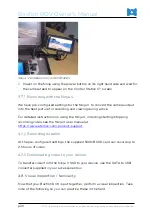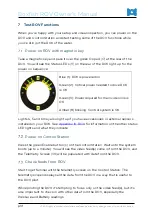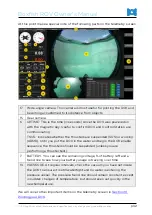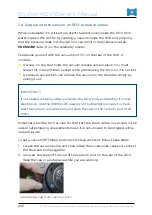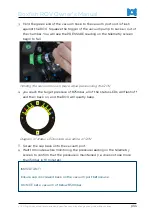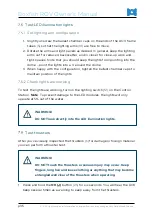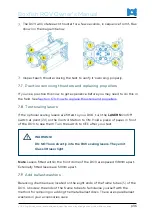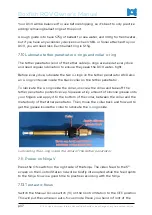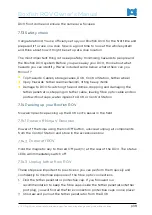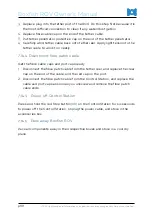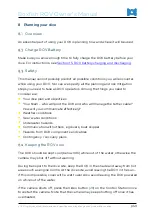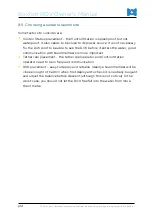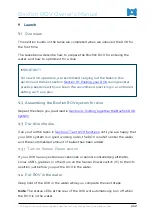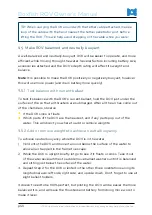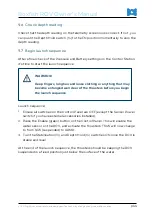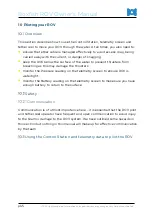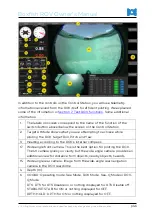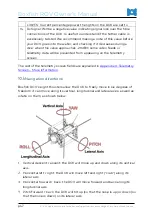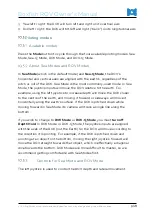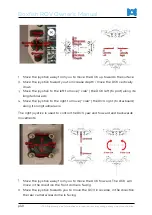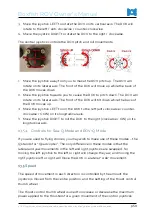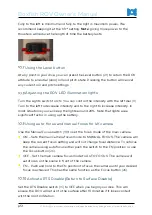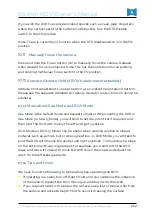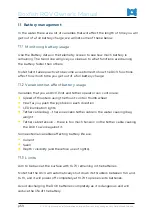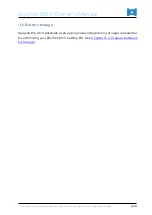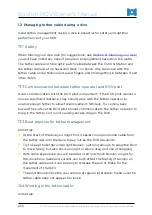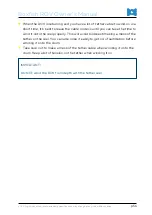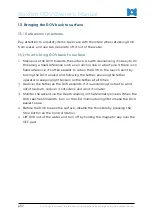
Boxfish ROV Owner’s Manual
p43
V1.3 All rights reserved. Information and specifications may change at any time without notice.
Make ROV balanced and neutrally buoyant
A well-balanced and neutrally-buoyant ROV will be easier to operate, and more
efficient while moving through the water. Several factors including battery size,
accessories attached and the ROV’s depth rating will affect its weight and
balance.
Note
: It is possible to make the ROV positively or negatively buoyant, however
this will use more power (and drain battery more quickly).
Test balance with current ballast
To test its balance with the ROV’s current ballast, hold the ROV just under the
surface of the so that all thrusters are submerged. After all the air has come out
of the chambers, observe:
If the ROV sinks or floats
Which parts of the ROV are the heaviest, and if any parts pop out of the
water. This will direct you where to add or remove weights.
Add or remove weights to achieve neutral buoyancy
To achieve neutral buoyancy while the ROV is in the water:
Hold onto the ROV and move it around below the surface of the water to
allow all air trapped in the frame to escape.
While the ROV is upright briefly let go to see if it floats or sinks. Take it out
of the water several times to add/remove ballast washers until it is balanced
and sitting just below the surface of the water.
Repeat Step 2 for the ROV oriented in the other three orientations along its
longitudinal axis: left side, right side, and upside down. Don’t forget to use all
eight ballast holders.
It doesn’t need to be 100% perfect, but piloting the ROV will be easier the more
balanced it is, and will save the thrusters and battery from doing more work to
make it level.
TIP! When carrying the ROV around with the tether cable attached, make a
loop of the cable with the hand nearest the tether penetrator port before
lifting the ROV. This will help avoid stepping on the cable while you walk!

